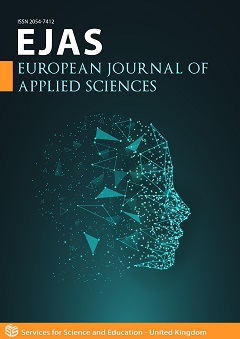Preparation of High-Purity Rutin from Sophora japonica
DOI:
https://doi.org/10.14738/aivp.1206.17865Keywords:
High-Purity of Rutin (HPR), Ultrasound extraction, Activated carbon decolorization, Polyamide chromatography separationAbstract
High-Purity Rutin (HPR) was extracted from Sophora japonica by ultrasonication, decolorized using activated carbon, separated by polyamide chromatography, and recrystallized. An orthogonal design of experiment was used to determine the optimal ultrasonic extraction time, number of ultrasonic extractions, and ultrasonic extraction temperature to maximize the extraction yield of rutin. The optimal conditions were determined as follows: 2000 mL of CH3OH were used to extract 20 g of the dried Sophora japonica flower bud powder for 30 minutes and the extraction was repeated 2 times under ultrasonic conditions (ultrasound frequency: 40 KHZ; water temperature: 40 °C). The decolorization of the CH3OH extract of Sophora japonica using active carbon was studied. The optimal processes are as follows: The filtrate of CH3OH extract was concentrated to 200 mL by rotary evaporation; 7.2 g of activated carbon powder was added; and the mixture was refluxed in an 80 °C water bath for 0.5 hours (twice). The polyamide chromatography separation conditions for crude rutin were investigated. The influence of particle size and amount of polyaminde used on extraction yield of rutin was studied. It was found that best separation results were obtained when 50 g of polyamide with particle size of 0.170~0.210 mm was used to purify 3 g of crude rutin. The purity of the HPR obtained was 99.8%, the extraction yield of HPR was 18.6%, and the extraction rate of HPR was 70.8%. The structure of the final product was identified by elemental analysis, IR, HPLC and 1H NMR. It was experimentally demonstrated that the proposed process was a safe, mild, low-cost and waste-free procedure.
Downloads
Published
How to Cite
Issue
Section
License
Copyright (c) 2024 Wenjing Ma, Chuanjin Wang

This work is licensed under a Creative Commons Attribution 4.0 International License.






